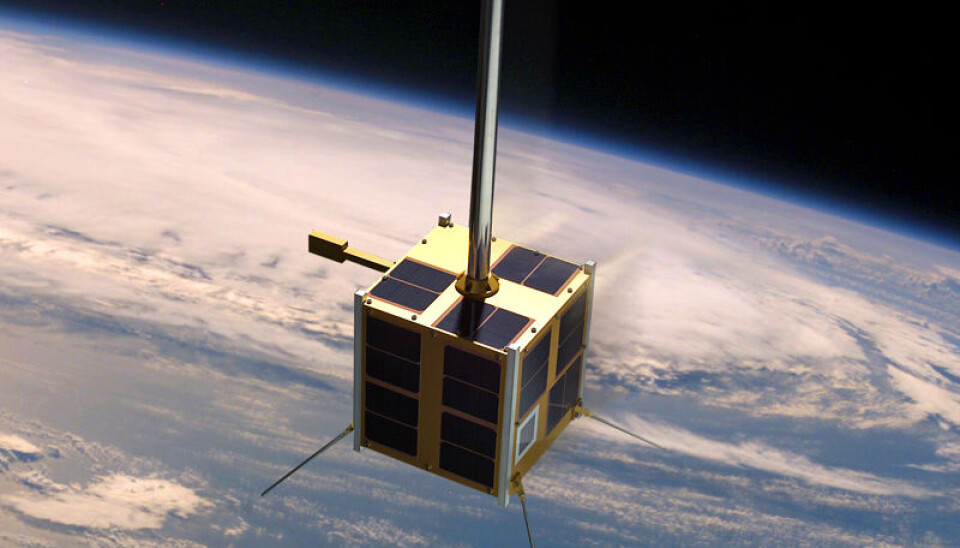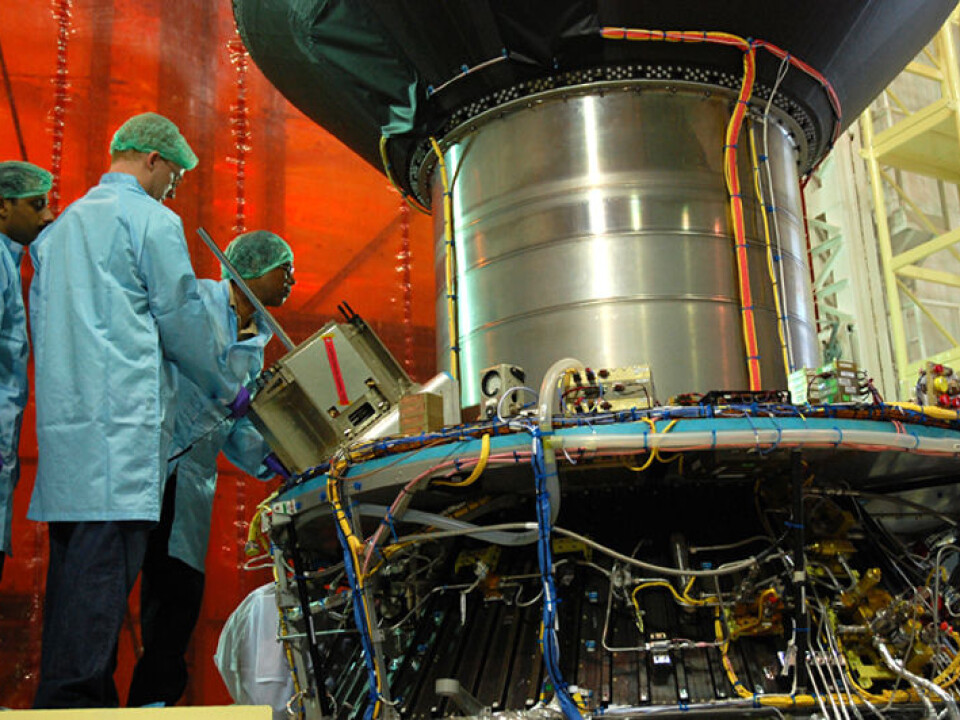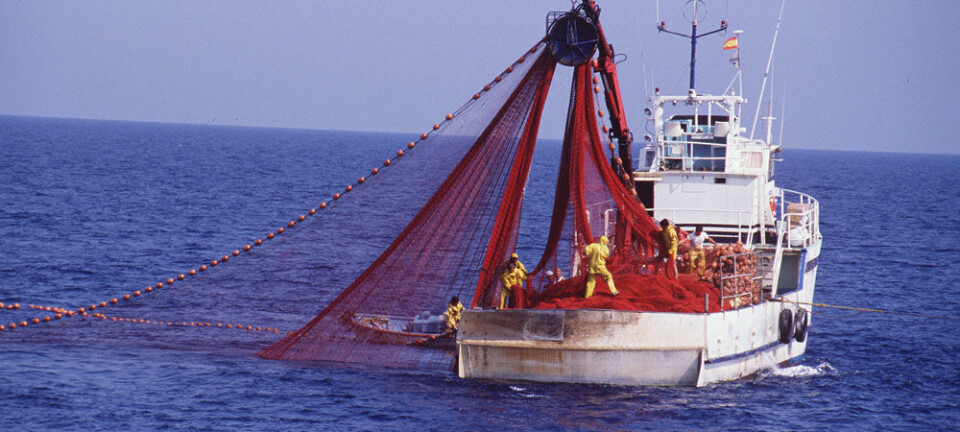
Space eyes on ocean traffic
Not spaceships, but ships monitored from space. Norwegian hardware on the International Space Station monitors traffic on the seven seas. A new Norwegian satellite is soon on its way to help police the oceans.
Denne artikkelen er over ti år gammel og kan inneholde utdatert informasjon.
A new Norwegian satellite is now under construction. It will be ready for a final check-up and launch this summer.
The satellite is a 20 cm cube weighing just 20 kg. It will be the second of its kind, according to Magne Osmundsen, who is senior advisor and responsible for small satellites at the Norwegian Space Centre.
From a polar orbit the satellite will keep a watchful eye on maritime traffic, including the High North.
Collision warning device transmits to space
Well, eye is the wrong word. The satellite doesn’t even have a camera. Instead it has a radio receiver.

All larger cargo and passenger ships now have special transmitters on board that designate the vessel’s position, course and speed. This warns other ships before one bow smashes smack dab into another.
It’s called the Automatic Identification System, or AIS. Initially it was simply used as a collision warning device among ships.
The curvature of the Earth keeps signals from travelling more than about 70 kilometres in a horizontal direction. However, nothing prevents them from beaming upwards several hundred kilometres. So ships at sea can readily transmit signals to ships in space.
Norwegian receiver on the space station
In November 2009 astronauts on the International Space Station (ISS) mounted two antennas and other transmission equipment on the exterior of the European Columbus module.

Norwegian receiver equipment for AIS signals was rocketed to the station in May 2010. The hardware was built by Kongsberg Seatex and is run by the Norwegian Defence Research Establishment.
But the ISS orbits our planet near the equator. What about ships that plough through frigid Arctic and Antarctic waters?
Exposing environmental sinners
The answer to that problem was shot up on 12 July 2010 from Satish Dhawan Space Centre in India. The payload in the rocket was the Norwegian satellite AISSat-1. The AIS receiver is the same as on the ISS. It too was built by Kongsberg Seatex.
“This satellite orbits almost right over the North and South Poles. So it can keep an eye on the politically and environmentally sensitive northern regions,” says Magne Osmundsen.
If radars on other satellites pick up signs of oil spills or other pollution, AISSat-1 can tell which ships are in the area and probably identify the culprit.
Twins in space
Now the AISSat-1 will soon be joined by a twin sister.
“AISSat-2 is almost identical to AISSat-1. This keeps costs down,” explains Osmundsen.
Ship traffic can be checked out more frequently with two satellites passing over. And this provides backup if one of them breaks down.
“The powerful particle storms that create the Northern Lights are a heavy strain on the electronics in the satellites. So their life expectancies are only three years,” says Osmundsen.
The grand overview
The signals from the receiver on the ISS are part of a larger data package the European Space Agency (ESA) downloads. The data is then relayed to the Norwegian User Operations Support Centre in Trondheim, one of nine European control centres for ISS experiments.
AISSat-1 transmissions are also received by the satellite station Svalsat on Svalbard.
Then all the information is relayed to the Coast Guard, which distributes it to the Defence, fisheries authorities, the governor of Svalbard and the Joint Rescue Coordination Centres.
"This gives then an extensive overview of ship traffic,” says Osmundsen.
After complete testing of AISSat-2 this summer it will be prepared for launch.
"It’s still uncertain exactly where and when this will occur. But probably in Russia or India in 2013,” informs Osmundsen.
---------------------------
Read this article in Norwegian at forskning.no
Translated by: Glenn Ostling
External links
- News from NASA about AIS at the International Space Station (ISS)
- News from ESA about AISSat-
- Information about AISSat from Kongsberg Maritime, which built the payload
































